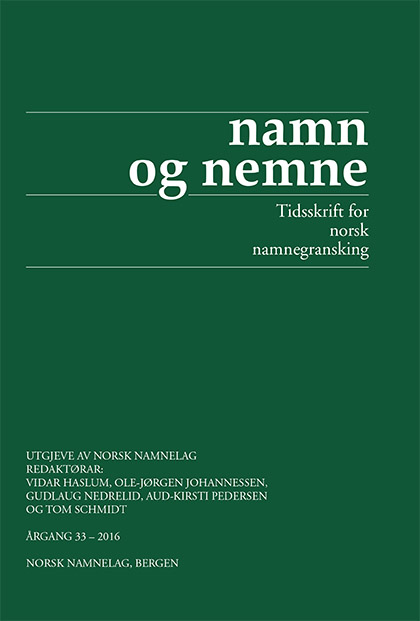Sammendrag
In the 19th century the Norwegian stock of first names grew immensely, primarily by derivation from older names, e.g. Rolftine from Rolf, but also by the introduction of historical or litterary ("romantic") names without any tradition in Norway. The great historian P.A. Munch disliked these name fashions and argued strongly against them. He put forward a hypothesis that the most deplorable derivational names were given at home baptism performed by a lay person, especially the midwife, leaving the absent priest no chance to correct or refuse them. The hypothesis presumes that the clergy had a better cultural taste than ordinary people and possessed both the knowledge and authority to restrain the parents' choices (there was no name law at that time).
This article compare the new derivational names given at home baptism performed by lay men or women with those given at church baptism performed by the priest. Several hundred names are examined in the parish registers from Munch's own lifetime, both from his own places of living (mainly Oslo) and from other parts of the country. The outcome is quite clear: There is no difference in naming practices between home (lay) and church baptism, either in formal types, originality of creation or frequency. This shows that the clergy did not restrict the parents' name wishes; on the contrary, the priests created numerous names of great originality themselves for their own children. On the other hand, name derivation forms distinct geographical patterns, but that has nothing to do with the exertion or lack of clerical authority.

